New Story Line 2022
KataGo's Immediate Crosscut
After Yamada Shinji's Tsuke
|
This section is dedicated to KataGo's second new discovery, the Immediate Crosscut after Yamada Shinji's Tsuke, which can be successfully played "early", i.e. before the consolidation of the border of Black's upper left corner. We compare KataGo's new endgame sequence on the left side with Yamada Shinji's original line of play, in order to identify the individual value of KataGo's Immediate Crosscut. Then we turn to determining the individual values of KataGo's further new discoveries. Finally, we will explain some failures in deviations from the continuation proposed by KataGo. | |
|
Referenced by ( Let's go back a few years and enter the world of KataGo ... |
|
KataGo's Immediate Crosscut This has already been shown in section "Yamada Shinji's Tsuke" ( Additional variations for a later played Tsuke can be found in section "Prof. Jeong SooHyun's Advice to Start the Endgame Early" ( Yamada Shinji found his Tsuke |
|
Black is unable to resist.
I found that Black could defend his lower left corner by descending to |
|
|
|
The comparison with the original sequence after Yamada Shinji's Tsuke will become a bit difficult. In order to simplify the determining of the individual effect of KataGo's Immediate Crosscut, we will briefly interrupt here and present the move sequence first that we utilised for so long. We will discuss KataGo's further move sequence and some subvariations therein later, at the end of this section. |
|
Let's go back in time and enter the world of amateurs ... |
|
Since Prof. Jeong SooHyun's kind advice, the endgame was started "early" by us, i.e. after the termination of the Nakade Sequence. For further details, please refer to section "Prof. Jeong SooHyun's Advice to Start the Endgame Early" ( Without much thought, we simply used the move sequence shown to us by Yamada Shinji for his "late" Tsuke even at this earlier moment in the game, after the exchange of |
|
|
|
The final scores of the game will become Black + 5 / Black + 3 |
|
After a short detour to KataGo's first new finding, the analysis continues in the world of amateurs ... |
|
|
|
|
|
|
|
Black must not play any reduction. After her decision point, White will connect her single stone at the upper edge with |
|
Capture Variation: Compared to the previous variation, ...
In total, White gained three points. Black + 5 => Black + 2 |
|
Semeai Variation: Compared to the previous variation, ...
In total, White gained three points. Black + 3 => Jigo |
|
( |
|
The value of her connection with |
|
|
|
Black must not play any reduction. After her decision point, White will connect her single stone at the upper edge with |
|
Capture Variation: Compared to the previous variation, ...
In total, White gained three points. Black + 2 => White + 1 KataGo's Atari (seen exclusively for itself) has a value of two points, KataGo's Bad-Shape Move has a value of one point. |
|
Semeai Variation: Compared to the previous variation, ...
In total, White lost one point. Jigo => Black + 1 |
|
Ultimately, the amateurs use all of KataGo's new findings to complete their analysis ... |
|
In principle, this connection loses two tempi in the Main Semeai, but gains four points (in the Capture Variation), so the net effect expected is two points in White's favour - in principle. However, it will turn out that the sum of three (KataGo's Immediate Crosscut), three (KataGo's Atari and Bad-Shape Move), and two (KataGo's Connection) is only seven! |
|
However, there is still something left with added value for Black at the upper edge ...
This move gains one prisoner and destroys an additional point of White's territory, at the cost of only one tempo in the Main Semeai. Therefore, the net gain of this capture is one point. |
|
|
|
Black plays 1/1 reduction. |
|
Capture Variation: Compared to the previous variation, ...
In total, White gained one point. White + 1 => White + 2 |
|
Semeai Variation: Compared to the previous variation, ...
In total, White lost three points. Black + 1 => Black + 4 |
|
Let's return to the world of KataGo ... |
|
Blocking at
If he played this move otherwise, White would reply by connecting at
|
|
If would have been technically correct for White to block with
|
|
As we already know, ... White will win the game by two points. Please note that Black will win the Semeai Variation by six points here, due to White's deviation at the upper edge. |
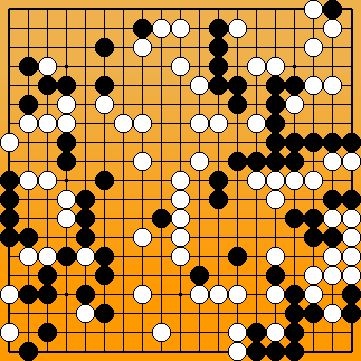
 2022MainLine
2022MainLine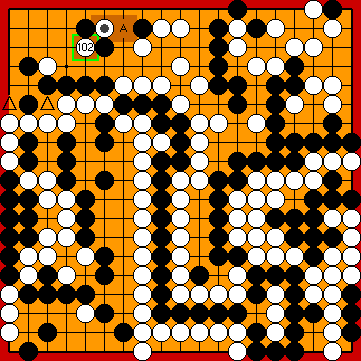
 : (A
: (A  2038
2038 2022MainLine
2022MainLine during the mutual occupation of opponent's liberties in the Main Semeai.
during the mutual occupation of opponent's liberties in the Main Semeai. 2037
2037 at a time when the endgame at the left side of the board was played after the dissolving of the hanezeki, i.e. "extremely late".
at a time when the endgame at the left side of the board was played after the dissolving of the hanezeki, i.e. "extremely late". . We will try to evaluate the value of KataGo's Immediate Crosscut in the respective subvariation.
. We will try to evaluate the value of KataGo's Immediate Crosscut in the respective subvariation.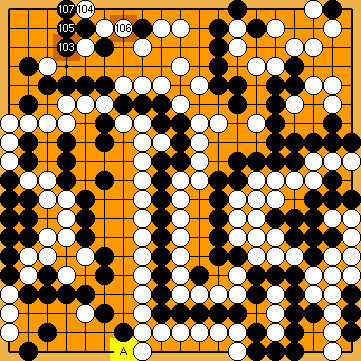
 : (106
: (106  .
. :
: :
: : (A
: (A  , instead, without affecting the overall result of the game.
, instead, without affecting the overall result of the game.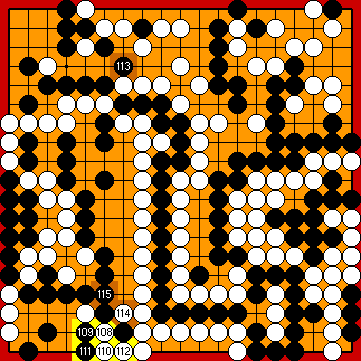
 :
: :
: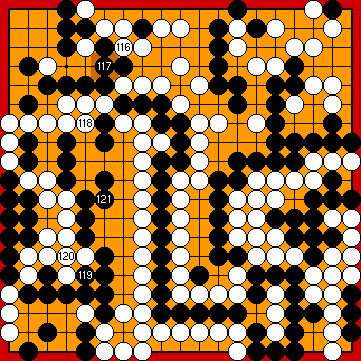
 :
: :
: :
: :
: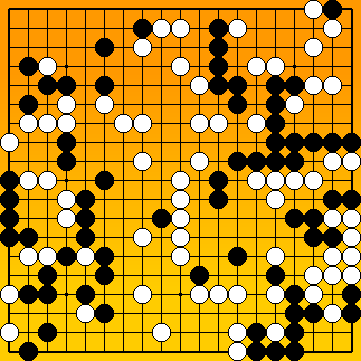
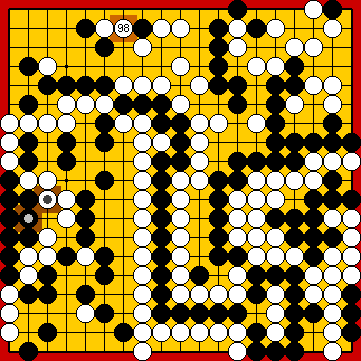
 : (
: ( 2038
2038 in the Nakade Sequence of the classical line of play, which ended with White's sente.
in the Nakade Sequence of the classical line of play, which ended with White's sente.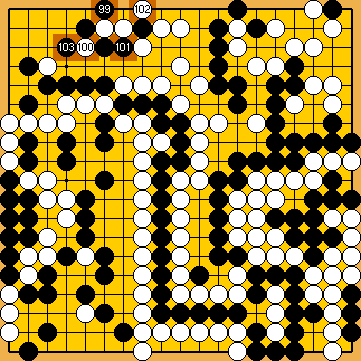
 :
: :
: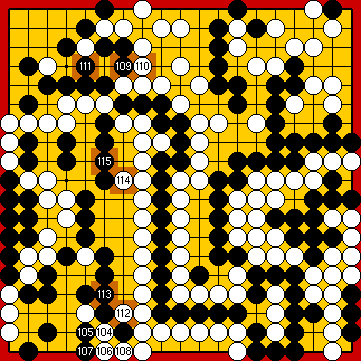
 :
: :
: :
: :
: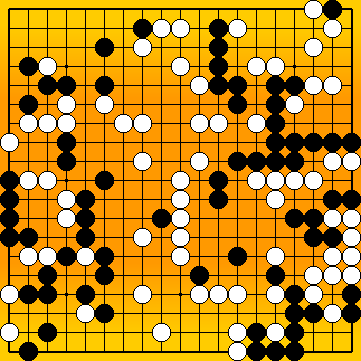
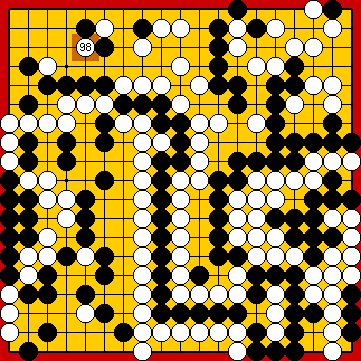
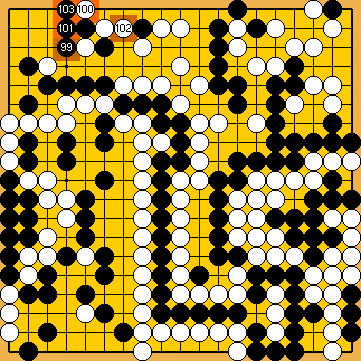
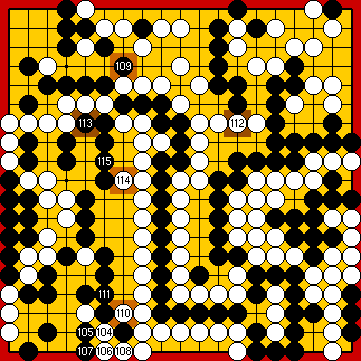
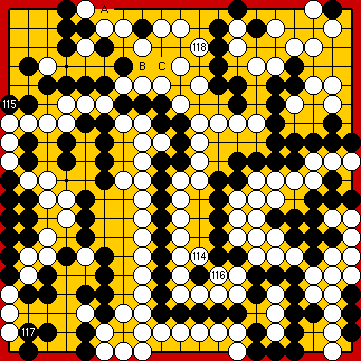
 at the top, forcing White to block at
at the top, forcing White to block at  .
.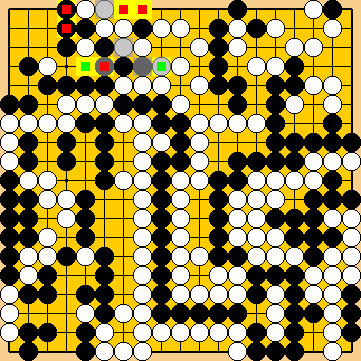
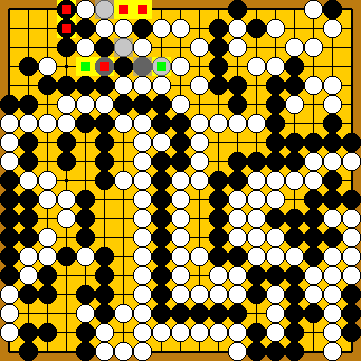
 2038
2038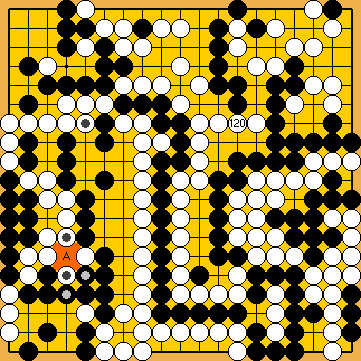
 A
A 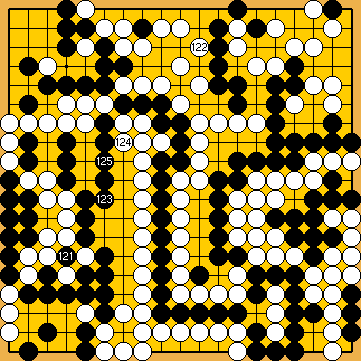
 :
: :
: :
: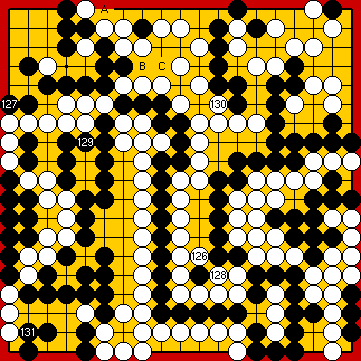
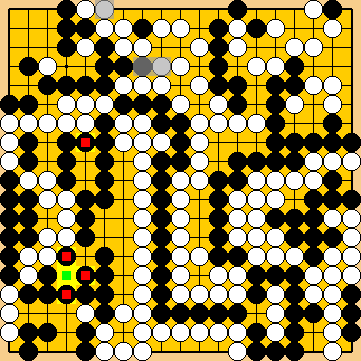
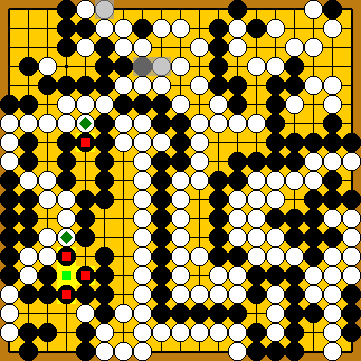
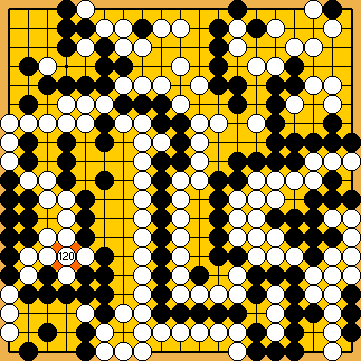
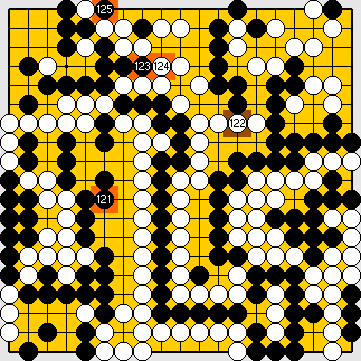
 :
: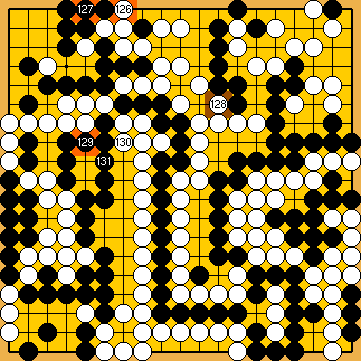
 :
: :
: :
: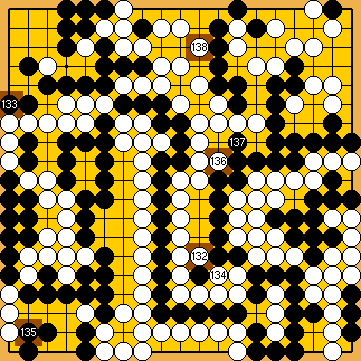
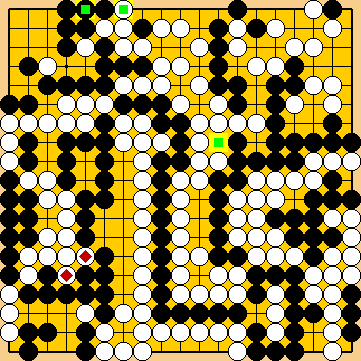
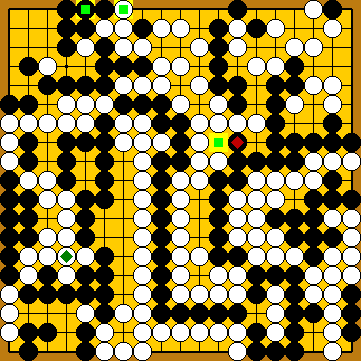
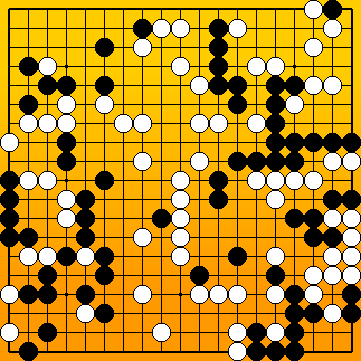
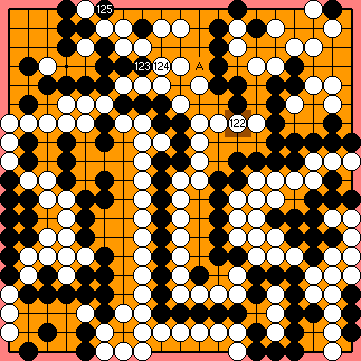
 , instead, would be one point worse; connecting at
, instead, would be one point worse; connecting at  two points.
two points. .
.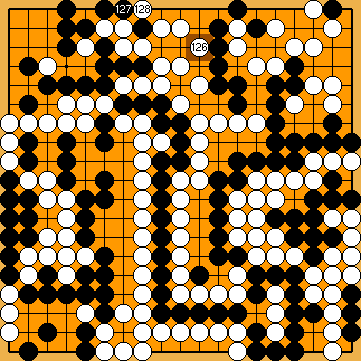
 immediately, letting Black destroy one point of her territory at the right in the further process of the mutual occupation of opponent's liberties in the Man Semeai.
immediately, letting Black destroy one point of her territory at the right in the further process of the mutual occupation of opponent's liberties in the Man Semeai. :
: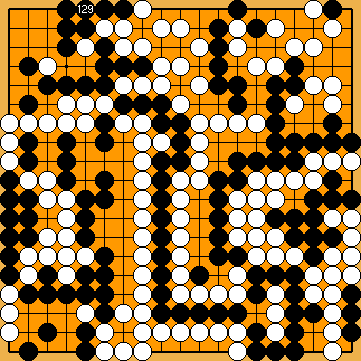
 :
:
